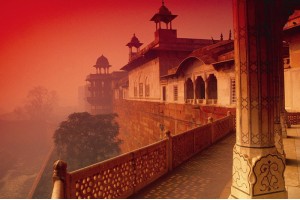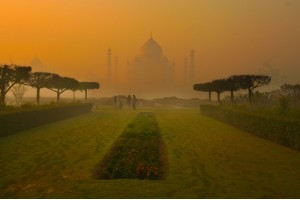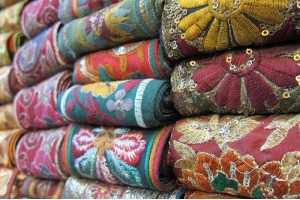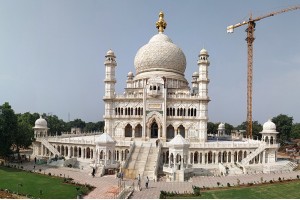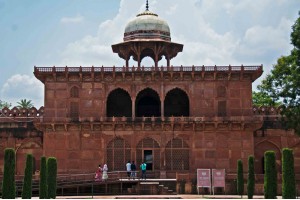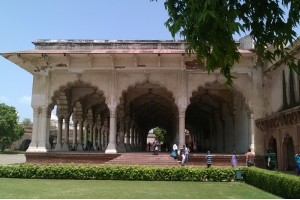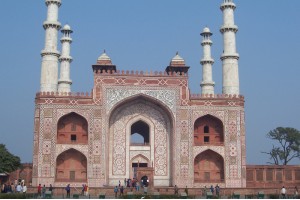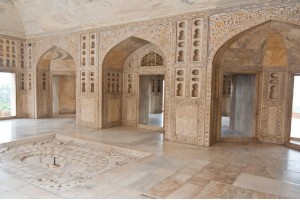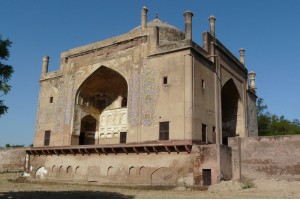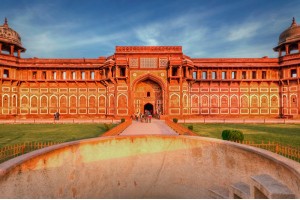-
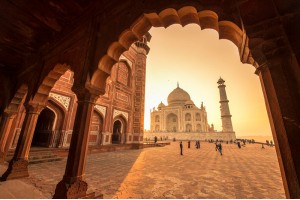
Taj Mahal
Rudyard Kipling described it as ‘the embodiment of all things pure’ while poet Rabindranath Tagore described it as ‘a teardrop on the cheek of eternity’. Every year, sightseers having more than twice the population of Agra pass through its gates to catch an once-in-a-lifetime glimpse of what is widely considered the most alluring building in the world.The Taj was built by Shah Jahan as a mausoleum for his favourite wife, Mumtaz Mahal, who died giving birth to their 14th child in 1631. The death of Mumtaz left the emperor so shattered that his hair is said to have turned grey virtually overnight. Manufacture of the Taj began the following year and, although the main building was thought to have been built in eight years, the whole monument was not completed until 1653. Not long after it was completed Shah Jahan was overthrown by his son Aurangzeb and incarcerated in Agra Fort for the rest of his life, he could only look out at his creation through a window. After his death in 1666, Shah Jahan was buried there alongside Mumtaz.
-
Agra Fort
Also known as “Red Fortâ€. With the Taj Mahal overshadowing it, one can easily overlook that Agra has one of the magnificent Mughal forts in India. Manufacture of the gigantic red-sandstone fort, on the bank of the Yamuna River, was started by Emperor Akbar in 1565. Further modifications were made particularly by his grandson Shah Jahan, using his favourite building substance – white marble.The fort was built initially as a military structure, but Shah Jahan converted it into a palace, and later it became his gilded prison for eight years after his son Aurangzeb snatched power in 1658.The ear-shaped fort’s huge double walls rise over 20m in height and measure 2.5 km in circumference. It contains a maze of buildings, forming a city inside a city, including massive underground sections, though many of the structures were demolished over the years by Nadir Shah, the Jats, the Marathas and finally the British, who used the fort as a garrison.
-
Mehtab Bagh
This Park was originally built by Emperor Babur as the last in a series of 11 parks on the Yamuna’s east bank, long before the Taj was developed; fell into dilapidation until it was little more than a huge mound of sand. To safeguard the Taj from the destructive effects of the sand blown across the river, the park was remanufactured and is now one the best places from which to view the great memorial. The gardens in the Taj are perfectly arranged in line with the ones here, and the view of the Taj from the fountain directly in front of the entrance gate is a special one.
-
Kinari Bazaar
The limited streets behind Jama Masjid are a crazy maze of over peopled lanes bursting with colourful markets. You can spend your leisure by taking a walk on streets and bazaars, but the area is commonly known as Kinari Bazaar as one most famous lanes fan out from Kinari Bazaar Road. You will find handicrafts, traditional clothes, spices, antique jewellery, snack stalls, marble work and what seems like 20 million other people.
-
Samadhi Swamiji Maharaj Bagh
It is simply known as Swami Bagh, this massive mausoleum which houses the tomb of Sri Shiv Dayal Singh Seth. The owner of the Radhaswami is of particular interest because it is still being made which is more than 80 years after it was initiated. Inside it there is a 1904 portrayal of what it should look like when completed. It should have a gold- latticed dome. For now, it’s a work-in-progress project being tackled by devotees. The design incorporates building styles from other major religions and includes some marvellously delicate floral sculptures.
-
Taj Museum
Inside the premises of the Taj complex on the western side of the gardens is the small but very beautiful Taj Museum. The museum displays Mughal miniature paintings, including a pair of splendid ivory paintings of Emperor Shah Jahan and his beloved wife Mumtaz. You will also find some very well preserved gold and silver coins dating from the same period and adding to it some architectural drawings of the Taj, and some agile celadon plates said to split into pieces or change colour if the food served on them contains poison.
-
Diwan-I-Am
After entering the Red Fort and just before arriving at Moti Masjid, you will see a massive open Diwan-i-Am (Hall of Public Audiences). This was used by Shah Jahan for domestic business and some features of throne room where the king listened to petitioners. In front of it, is the small and rather inappropriate grave of John Colvin, a lieutenant-governor of the Northwest Territory who died of a sickness in the fort during the 1857 First War of Independence.
-
Akbar Mausoleum
This magnificent sandstone and marble tomb honour the greatest of the Mughal emperors. The vast courtyard is entered through a stunning entrance. It has three-storey minarets at each corner and is made of red sandstone strikingly ornamented with white-marble geometric designs.
-
Khas Mahal
This splendid white-marble octagonal monument and palace is where Shah Jahan was incarcerated for eight years until his death in 1666, and from where he could stare at the Taj Mahal, the tomb of his wife. When he died, his body was taken from here by yacht to the Taj Mahal.
-
Chini-ka-Rauza
The Persian-style riverside tomb of Afzal Khan, a poet who served as Shah Jahan’s chief minister, was manufactured between 1628 and 1639. Unusually visited, it is concealed away down a shady path of trees on the east bank of the Yamuna.
-
Jahangir Palace
This huge splendid Jehangir’s Palace was built with red sandstone and probably manufactured by Akbar for his son Jehangir and named it after it only. It combines the Indian and Central Asian architectural styles and decorations on walls with wall printing. A reminder of the Mughals’ Afghani cultural roots would be seen here.
-
Jama Masjid
This is a furnished mosque which is built on the Kinari Bazaar by Shah Jahan’s daughter in 1648 AD. The main feature of marble patterning on its dome was done after it got connected to Agra Fort.

